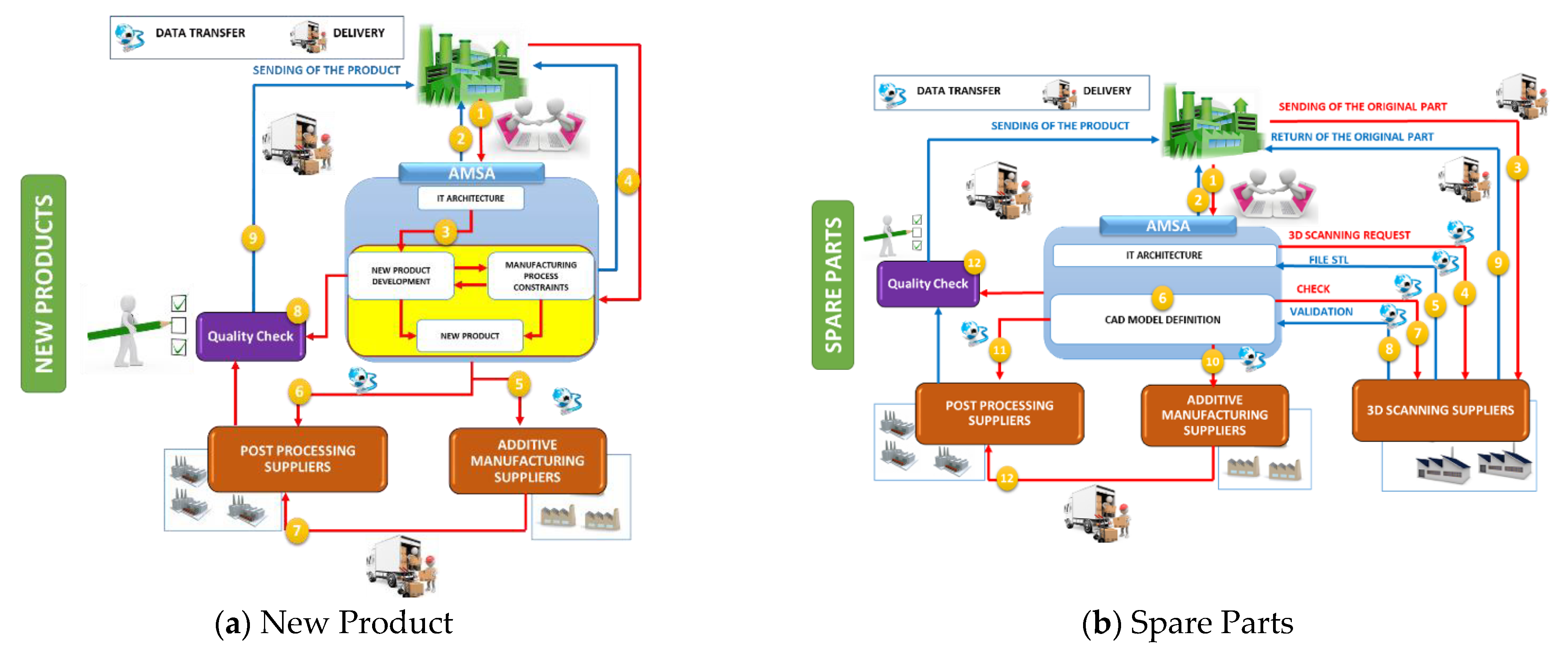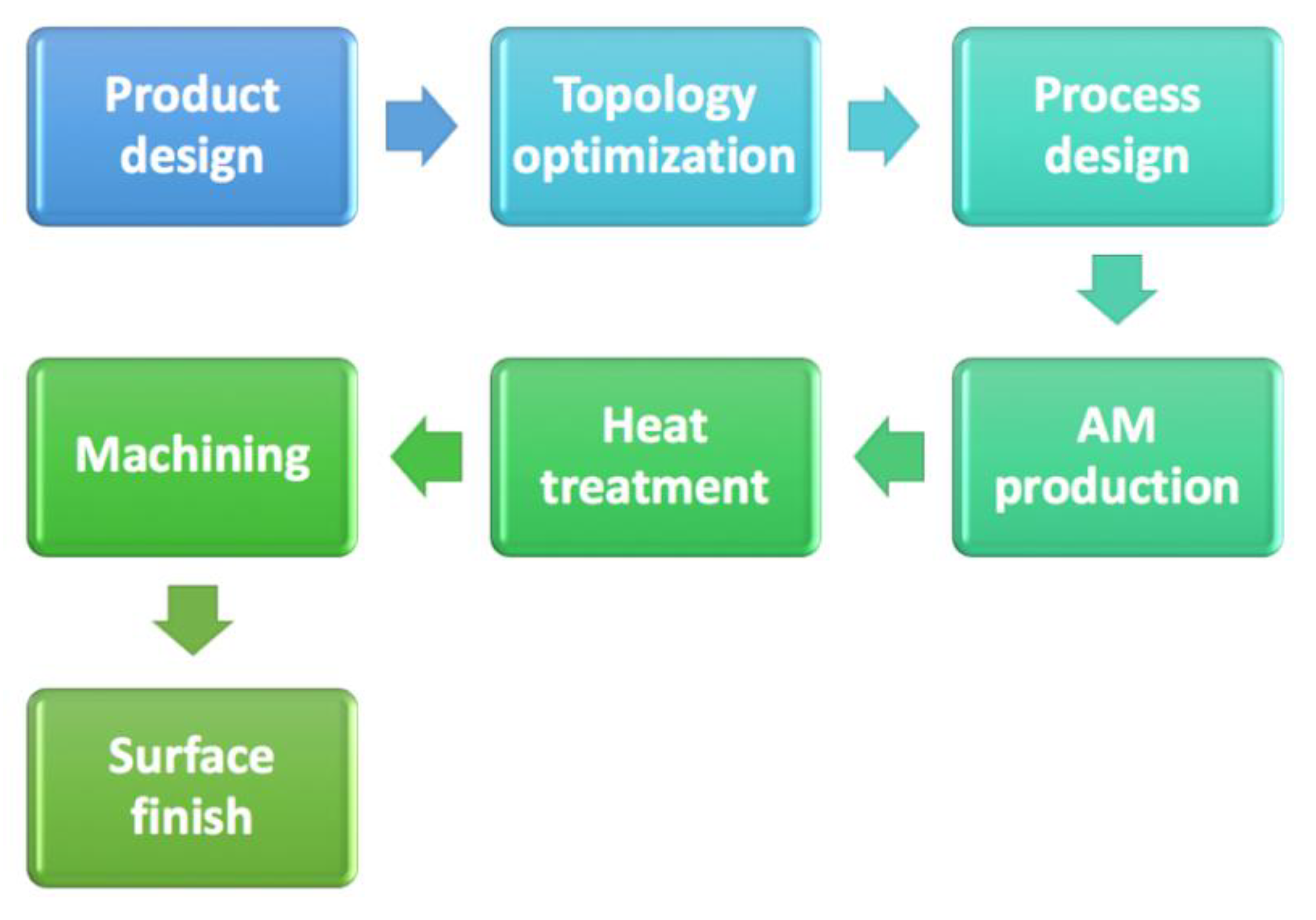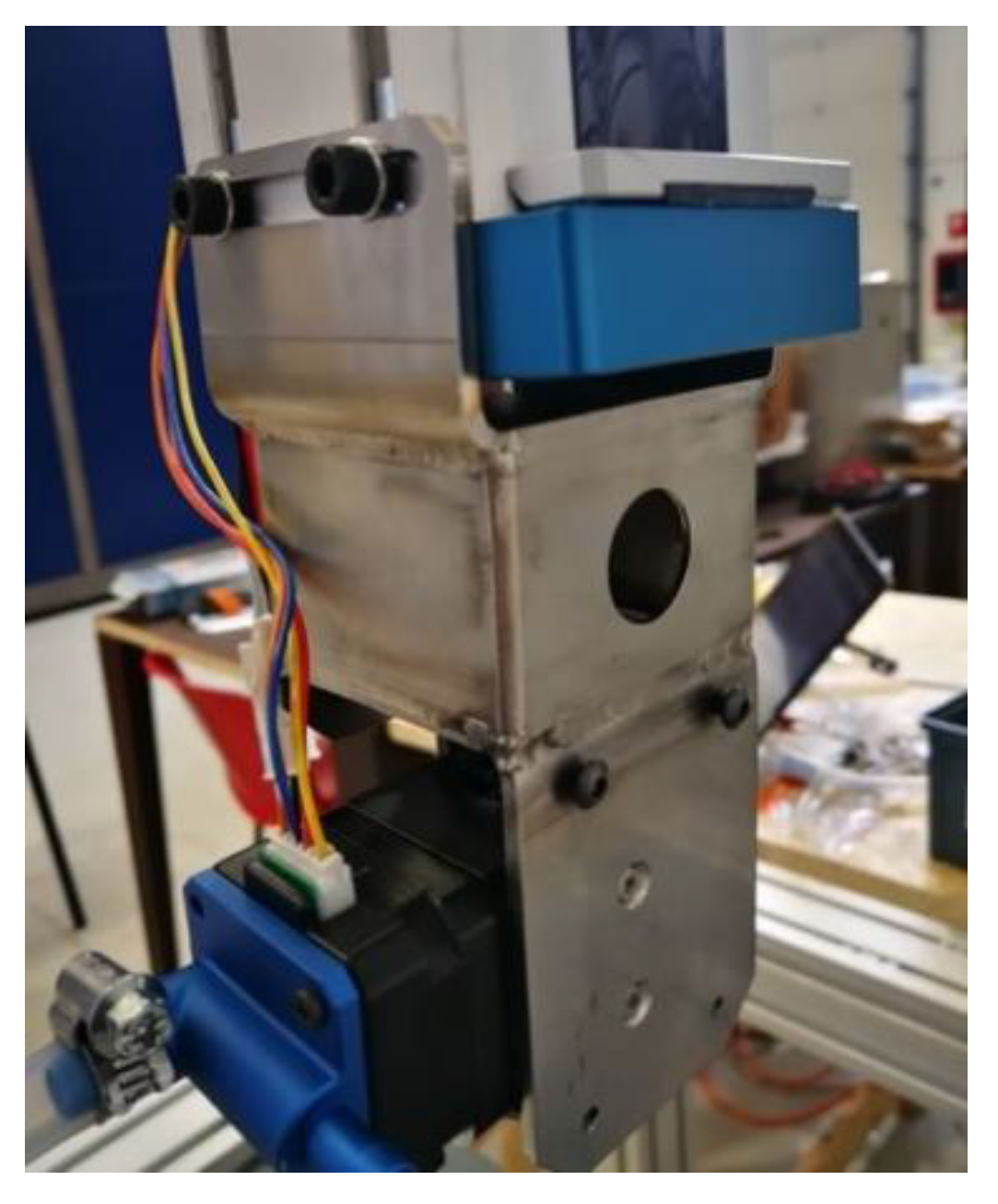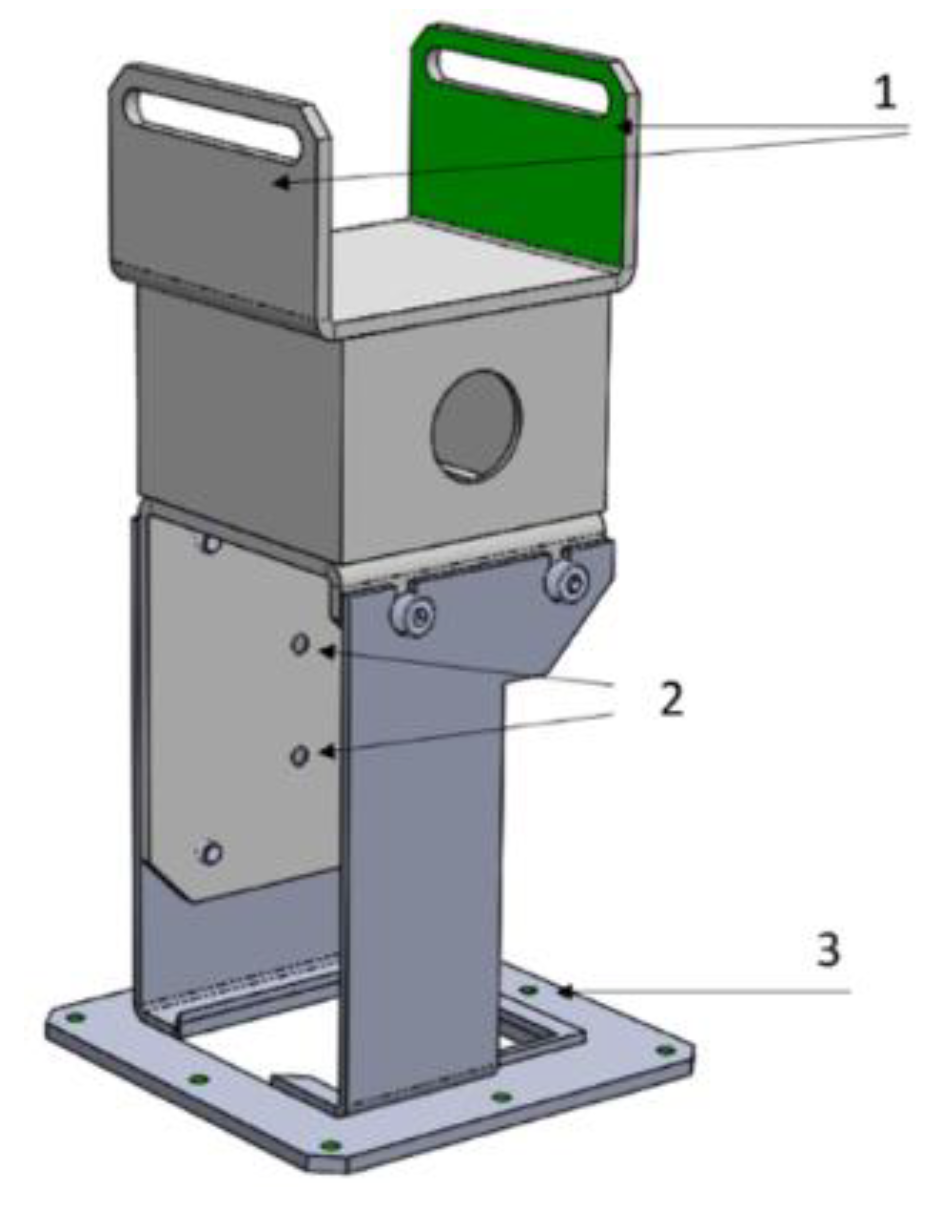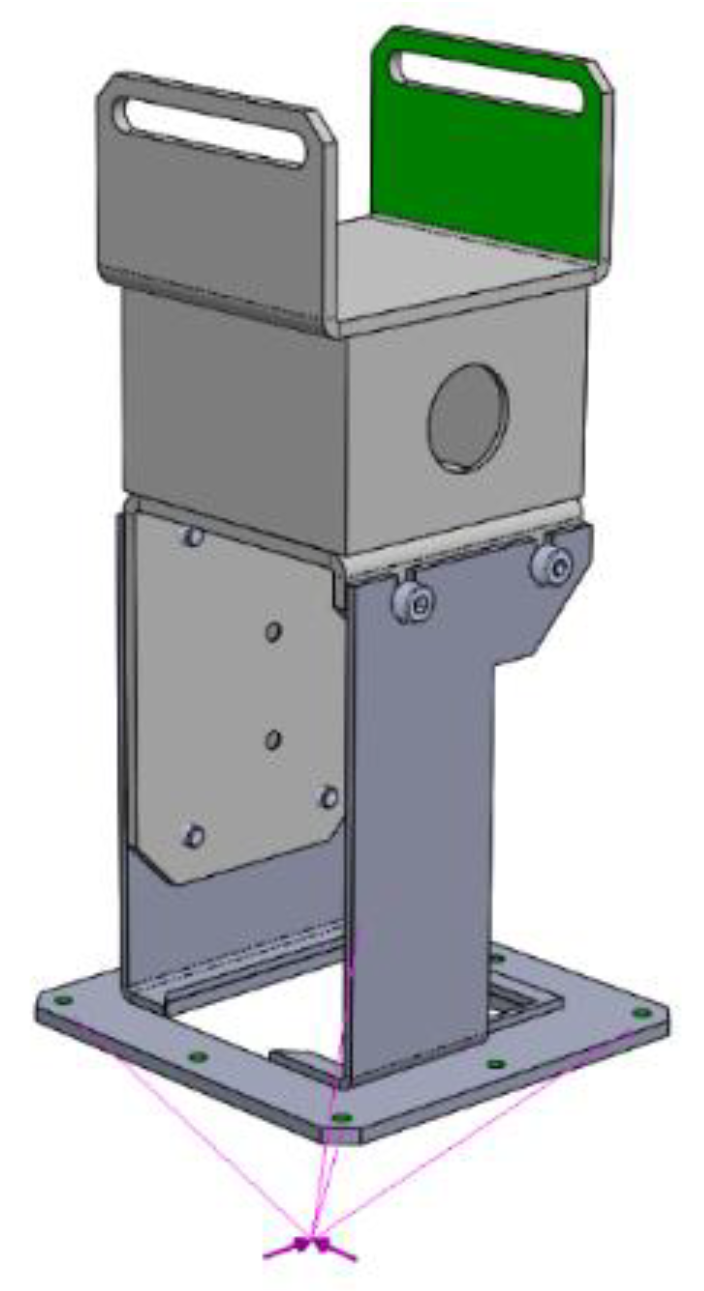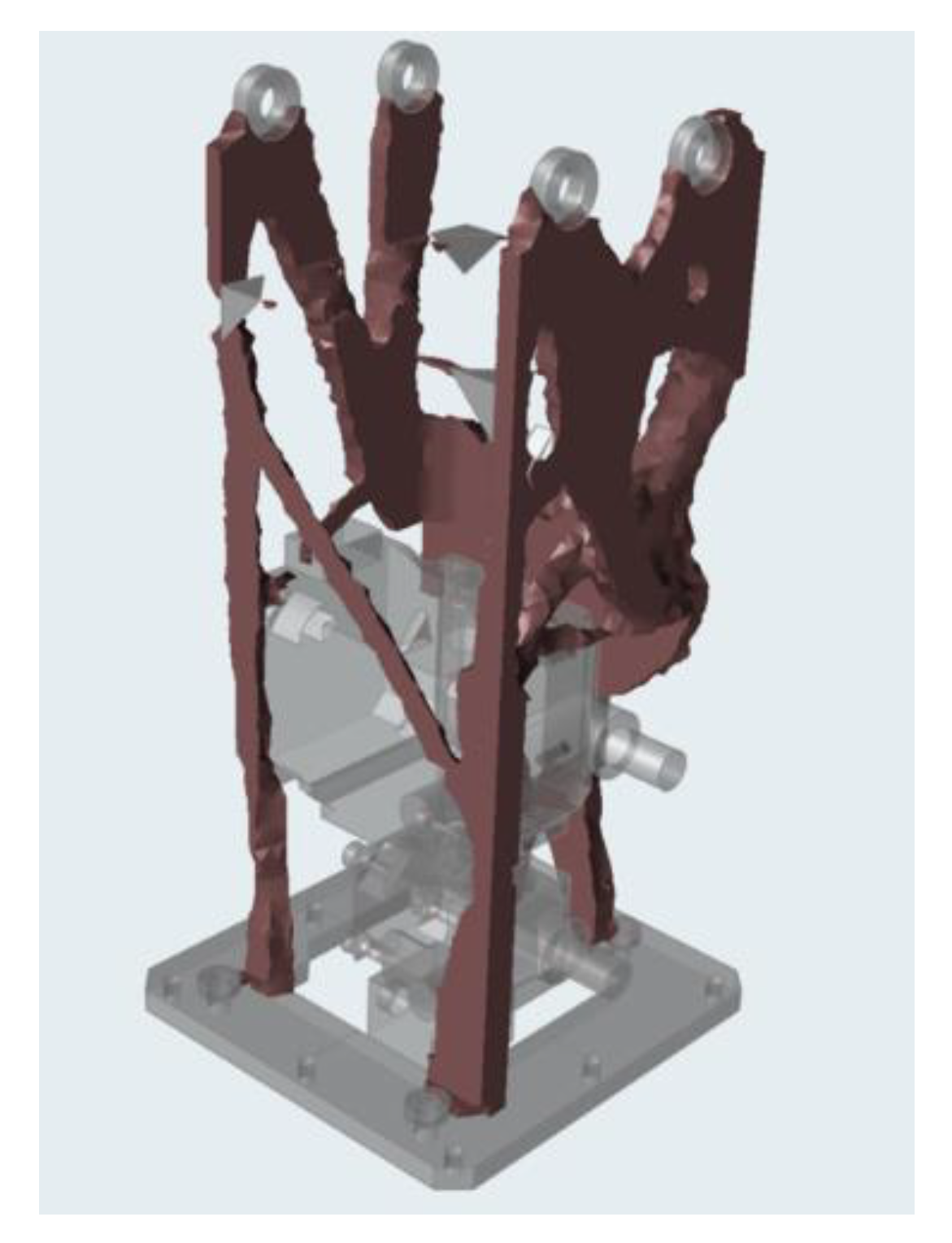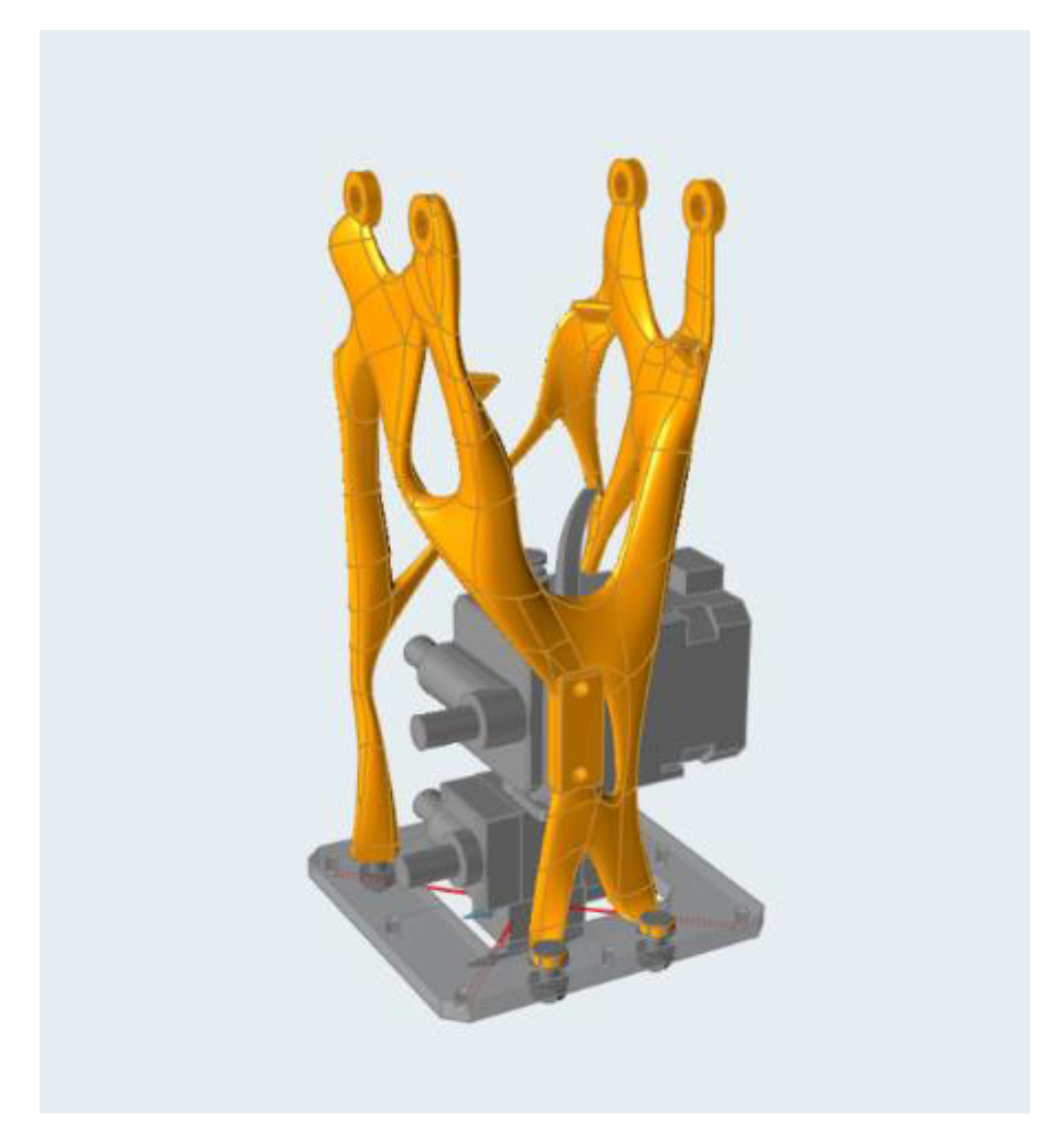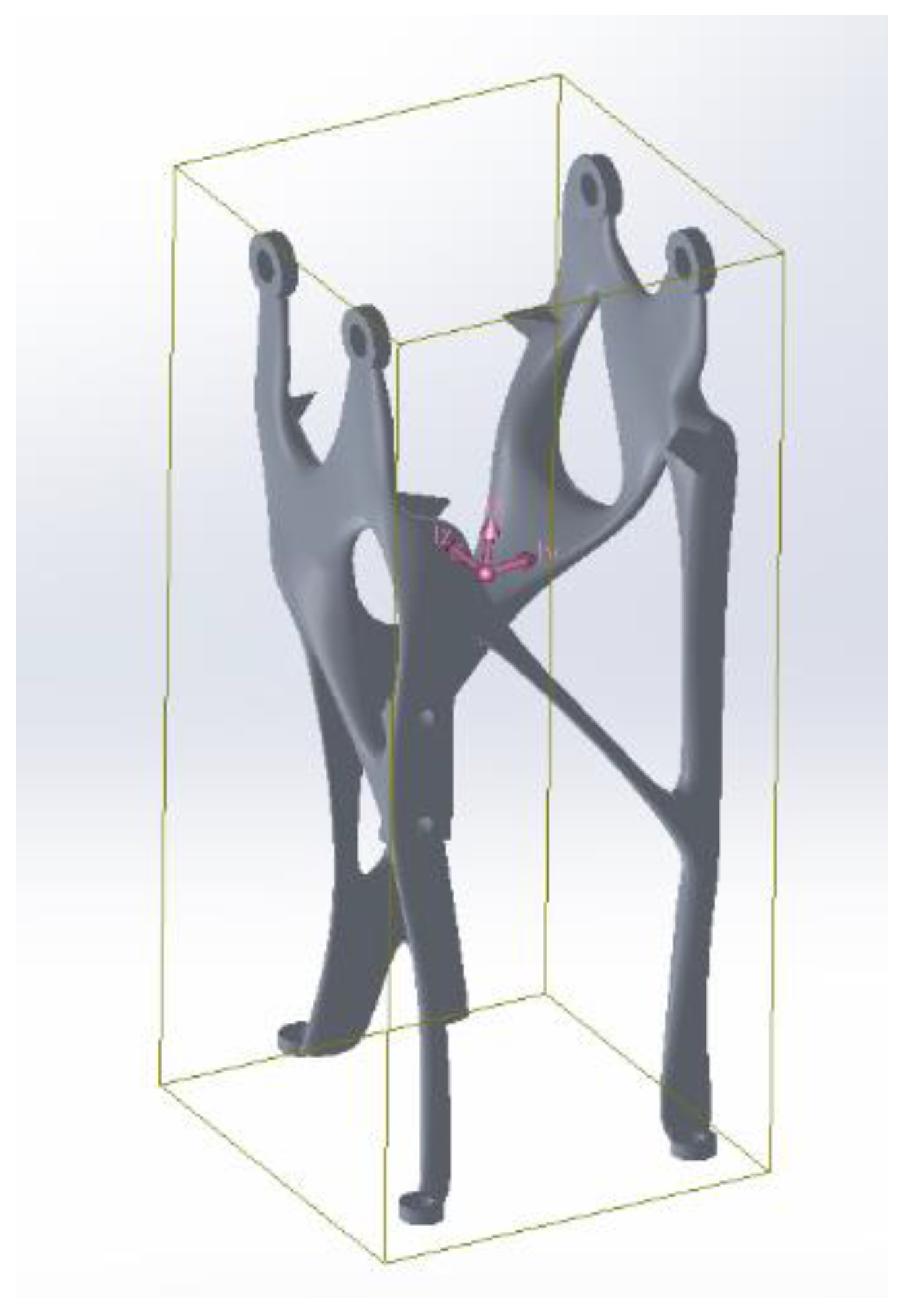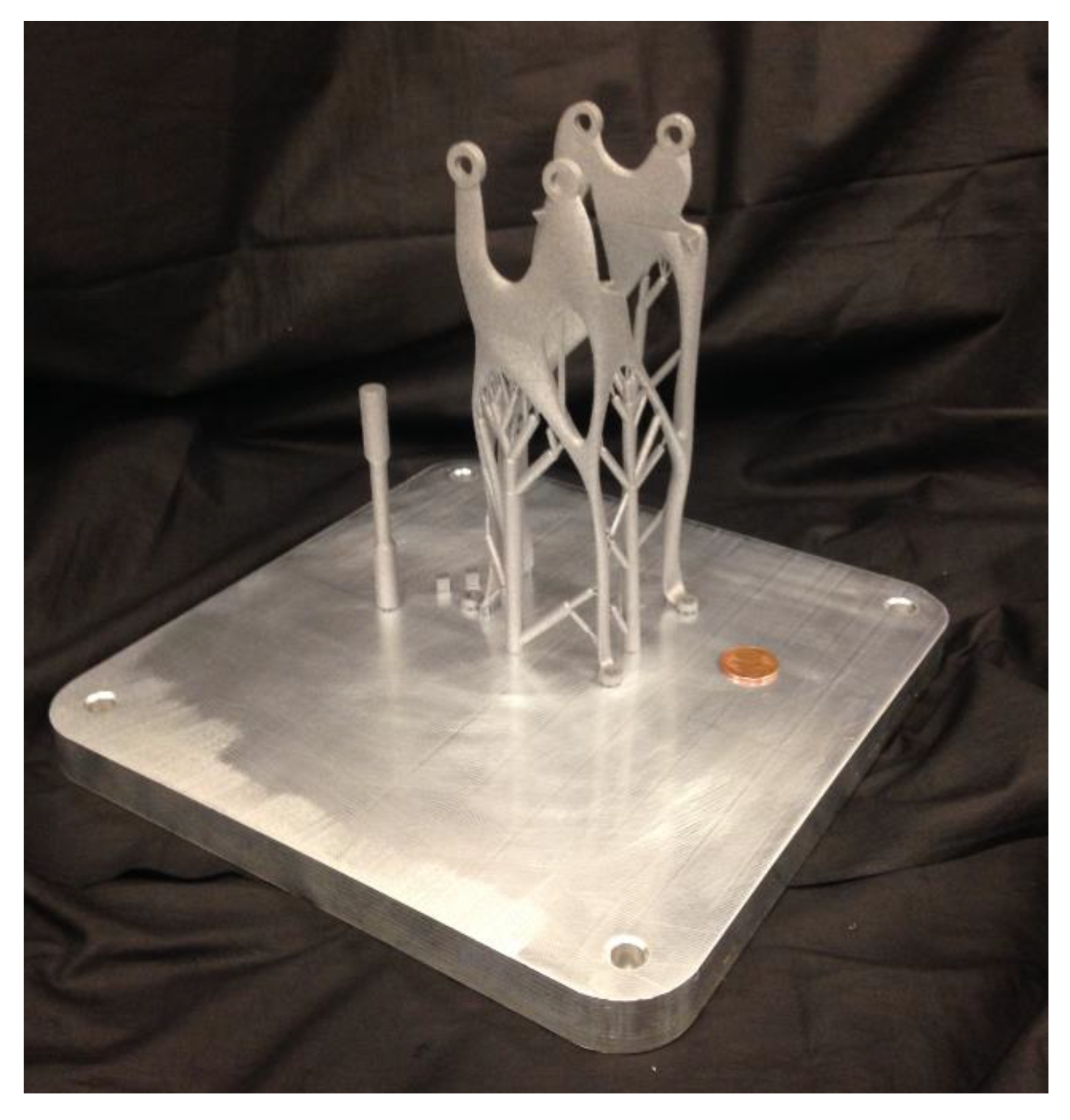1. Introduction
Recently, the manufacturing sector has seen several changes in its own reference markets. These changes are linked to different factors such as the advent of new technologies and customer needs. For the first aspect, the advent of new technologies, it has introduced new ways to manufacture products that allow obtaining high flexibility and new possibilities to manufacture components with innovative shapes. In addition to the technologies, the customer needs have assumed a strategic importance because they are going toward high quality levels, high customization, and high complexity of the products, leading from the “Mass Production” model to the “Mass Customization” one. Another important aspect that supports these market changes is the new capabilities that the IoT (Internet of Things) offers. This term is a neologism that refers to an Internet extension toward the world of objects and places, which was introduced by Kevin Ashton in 1999 and further developed by the research agency Gartner [
1].
Additive Manufacturing (AM) is defined as “a process of joining materials to make objects from 3D model data, usually layer upon layer, as opposed to subtractive manufacturing methodologies” [
2], and it is considered one of the most promising manufacturing technologies, owing mainly to the geometrical flexibility it provides, but also to assets such as production flexibility, lead time reduction for short series production, reduced cradle-to-grave energy usage, and CO2 footprint [
3]. With the rise of AM in the last decade, a multitude of processes has become available to engineers, at a much lower cost than previously [
4]. This has led to considering AM for manufacturing anything from appliances to automobiles and aircrafts. However, the applicability of AM to such areas is questionable. Moreover, although AM processes share a common approach and thus a few common characteristics, each one of the market-available AM technologies presents its own unique opportunities and limitations [
4].
Zaman et al. introduce a generic decision methodology, based on multi-criteria decision-making tools, that will not only provide a set of compromised AM materials, processes, and machines but will also act as a guideline for designers to achieve a strong foothold in the AM industry by providing practical solutions containing design-oriented and feasible material-machine combinations from a current database of 38 renowned AM vendors in the world. An industrial case study, related to aerospace, has also been tested in detail via the proposed methodology [
5].
AM has the potential to simultaneously build an object’s material and geometry but considering unlimited potential does not guarantee having unlimited capability. The designers working in the AM industry have to not only concentrate on the types of constraints involved in procedures such as Computer-Aided Design (CAD) and the digitization of its ideas [
6], discretization (digital and physical) of the parts to be produced, assessing capabilities of AM machines, and processing of materials to gauge the impact on properties, but they also have to cater for new challenges and requirements associated with metrology and quality control, maintenance, repair and recycling, lack of generic interdependency between materials and processes, limitation in material selection, longer design cycle than manufacturing cycle, surface finishing issues, and post-processing requirements [
7,
8]. Since the stakeholders in AM industry related to part manufacture are not altering the design completely in the “design phase”, thereby resulting in an increase in the costs incurred both due to manufacturability and production time, it is highly important to address the relationship between manufacturing constraints, customer requirements, and design guidelines so that the overall cost including assembly and logistics is minimized [
9].
Colosimo et al. present a cost model to evaluate the economic impact of defects and process instability in metal Additive Manufacturing (AM) [
10].
The introduction of new technologies could cause deep changes to the entire supply chain configuration. A new approach designed to understand the importance of supply chain considerations for a suitable technology assessment has been studied. It is aimed at proposing a quantitative model for the evaluation of different structures of supply chains based on different production technologies. In particular, by defining a set of Key Performance Indicators and applying a multi-criteria decision method, a final score is computed, giving important information about both environmental and economic aspects [
11,
12].
Bikas et al. define a framework to assist non-expert potential users of AM technology with evaluating their specific use cases [
13].
Di et al. establish a mathematical cost model to quantify the different cost components in the direct metal laser sintering process, and it is applicable for evaluating the cost performance when adopting dynamic process planning with different layer-wise process parameters. The case study results indicate that 12.73% of the total production cost could be potentially reduced when applying the proposed dynamic process planning algorithm based on the complexity level of geometries. In addition, the sensitivity analysis results suggest that the raw material price and the overhead cost are the two key cost drivers in the current additive manufacturing market [
14].
Sustainability aspects and cost efficiency in the product lifecycle have great potential for improvement, so cost models are necessary to assist managers in selecting part-specific allocation strategies for metal spare parts realized in AM.
Ott et al. propose a two-stage model as a basis for decision support in spare part allocation. The first stage introduces a multi-criteria part classification regarding classical criteria as well as criteria referring to AM. The impacts on different spare part allocation strategies such as final stockpiling, conventional spare part production, or AM on demand will be the focus. Based on the first stage, a conceptual model for a comprehensive activity-based cost assessment will be adopted to assess the arising costs that occur for each of the compared allocation strategies [
15].
Sabiston et al. expand upon existing mathematical constructs by providing an algorithm to minimize the cost and time associated with additively manufactured parts within a three-dimensional topology optimization framework. The formulation has been constructed in such a manner to accommodate large-scale topology optimization problems, including a filtering scheme requiring minimal storage of additional mesh information and an iterative finite element analysis solver. A rigorous trade-off analysis is conducted to determine the optimal contribution of additive manufacturing factors to minimize build time [
16].
Liu et al. present a manufacturing cost constrained topology optimization algorithm considering the laser powder bed additive manufacturing process. The proposed algorithm would provide an opportunity to balance the manufacturing cost while pursuing the superior structural performance through topology optimization [
17].
Palanisamy et al. adopt a multi-criteria decision-making (MCDM) technique, namely the best-worst method (BWM), to select the suitable material for the product. This is along with the end user expectations in AM. In the initial phase, the suitable machine to be selected from the available machines is based on the parameters such as cost, accuracy, variety of materials, and material wastage. From the variety of materials, the suitable material was selected based on the respondent requirement. The criteria that had a greater influence on the overall cost of the product manufacture through AM are identified and used. According to the BWM, the criteria to be selected by the decision maker based on the respondent expectations are identified. In the BWM method, pairwise comparisons are carried out between the best and worst criterion suggested by the decision makers, as that leads to the selection of the suitable material [
18].
Within a research project, the authors have developed a web-based innovative solution that is able to supply services thanks to innovative technologies such as internet capabilities, additive manufacturing processes, product development know-how, and reverse engineering systems.
This paper aims to report the obtained results thanks to the application of AMSA (Additive Manufacturing Spare parts market Application) methodology to one of the selected case studies in order to validate it also for complex geometries. The aim of the defined methodology is to provide support to the AMSA operator to properly evaluate the selection of suppliers based on the characteristics of the geometry to be created. Therefore, a provisional model has been implemented that allows filtering the technologies according to suitable performance indexes. The AMSA platform is a web-based service developed on the basis of the main guidelines defined by the modern paradigm of Cloud Manufacturing (
https://www.amsacloudmanufacturing.it/, accessed on 1 December 2020).
The potential advantages that distinguish this paradigm are the following:
Flexibility;
Tool to support the decision-making process;
Intelligent production “on demand”;
Production capacities intended as services.
After a brief description of the case studies, the appropriate Key Performance Indicators (KPIs) have been defined and then calculated for a selected case study in order to simulate the working condition of the AMSA operator, in the attempt to identify the most suitable technologies to adopt for the component production. Starting from the Compatibility Index (CBA, provides a relative compatibility index between the product and the AM machine, which is better described in the
Appendix A) results, the components production was therefore started and, once realized, the requirements validation was carried out.
At present, the procedure has been developed and tested with the AMSA test cases, so the different indices values need to be further refined with the print of additional components. The implemented relationships are the result of an analytical interpretation of empirical evaluations matured on the field.
2. AMSA Methodology Description
The AMSA methodology was created with the aim to provide a functional tool, that is integrable within a web platform to favor the selection of the most appropriate additive technologies and/or machinery depending on the product characteristics.
In order to facilitate the inclusion of this platform within the additive market, it was decided to start from market research to evaluate the most commercially interesting context. Following this study, it was decided to concentrate activities on additive technologies aimed at the production of metal components:
Selective Laser Melting (SLM)
Electron Beam Melting (EBM)
Directed Energy Deposition (DED).
In addition, it is worth mentioning that they represent almost 100% of the production capacity present on the market, and the three technologies also ensure the possibility of managing a wide range of product requirements, from the large components proposed by DED processes to the dimensional accuracy obtainable with SLM processes, up to the management of particularly reactive materials thanks to the EBM ones. For each of the above-mentioned technologies, an analytical–parametric model has been developed in order to correlate the main process parameters with product performance in terms of costs quality and mechanical characteristics. The developed models, supported by suitable experimental tests that are able to calibrate and optimize the simulation parameters, have allowed us to identify the most relevant process variables responsible for the additive production success for each technology.
Figure 1 shows the configured supply chains for new products and spare parts. As reported, the supply chain is not fixed, and it varies, taking into account the typology of services. One of the straight points of the AMSA platform is the possibility to adapt the supply chain and the resources to the market changes. AMSA represents also a good opportunity for the suppliers to improve the action range and then their business.
Starting from these results, the AMSA methodology has been developed, with the aim to extrapolate and to create appropriate relationships among different data sources able to provide, for each component to be produced by additive manufacturing, a series of key information:
Considering the large amount of variables to be managed, it was decided to consider an approach based on the selection of a series of technical KPIs, whose objective is to provide an index of compatibility of each machine type (non-technology) with respect to the requirements of the component to be produced (
Table 1).
The technical KPIs have a percentage values from 0 to 100% and different calculation methods depending on the considered case.
Once the KPIs calculation is completed, the platform provides a list of solutions ordered based on a compatibility KPI (CBA), which were obtained as an average (properly weighed) of the other available KPIs. With the compatibility KPI, the platform provides two other fundamental KPIs, which provide a complete summary that is able to facilitate the choice of the most appropriate machinery:
Cost KPI (CST): provides an evaluation of the component price to be produced associated with the various machines available in AMSA;
Time KPI (TMP): provides an estimate of production times according to the considered technology.
Identification of the technical KPIs, which define the CBA compatibility KPI, has been defined from a comprehensive analysis of the following aspects:
The physical and mechanical characteristics of the materials selected for industrial applications;
Analytical models selected from what is available in the technical and scientific literature;
Analytical–empirical models developed by the research group during previous R&D (Research and Development) activities;
Finite Element (FE) models where useful to make the correlation between process parameters and obtainable final results objective;
The performance specifications description to be achieved for the selected industrial applications.
Therefore, the final list of the defined technical KPIs is the following:
Material evaluation (MAT);
Overall dimensions study (ING);
Precision analysis (PRE);
Resolution analysis (RIS);
Roughness analysis (RGS);
Study of the undercuts (STQ).
To formulate each one of the KPIs, the research team has tried to take into consideration all the aspects that are evaluated by the specialists during the process design phase for a specific product. These aspects have been correlated with each other in specific flow diagrams and then translated into analytical expressions, which are appropriately calibrated according to a series of experimental results.
Figure 2 shows, as an example, the flow chart of the MAT KPI.
In the specific case of the material to be used for the production of the component, it is a direct request from the customer, which must be crossed with the available technologies to verify that it is actually obtainable with the available machines and evaluate any problems related to the timing or processability. MAT KPI is an index between 0 and 1, and has as its objective the expression of the process described in the
Figure 1: once the request for an estimate has been received, the material indicated by the customer must be compared with the databases of the machines made available by the AMSA platform to identify the list of those who are actually capable of handling the material. Therefore, the list of machines is ordered according to three criteria:
Evaluating the aspects highlighted in
Figure 1, the following expression of MAT was proposed; the details are provided in the
Appendix A.
θmat: compatibility between material and machine;
αappr: metal powder supply coefficient;
τapprw[g]: supply time for metallic powders (days);
αmt: material change coefficient;
τAMmt[g]: material change time (days);
αfr: material processability risk coefficient;
fr: risk factor of material processability, which represents a factor for increasing the mass of material required by the process, and it is requested to the supplier.
A clearly different approach was instead reserved for the KPIs of Cost (CST) and Time (TMP), which present particularly complex formulations that are able to take into consideration all the production phases of a product from design to finishing (
Figure 3).
In addition, in this case, the complete formulations are provided in
Appendix A. With the application of the methodology, appropriately integrated within the AMSA platform, users are therefore able to evaluate the main process aspects and compare them, as described below.
